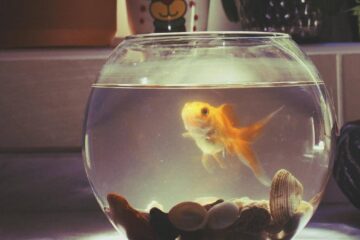Maintaining the right pH level in your aquarium is essential for the health of your fish and aquatic plants. If the pH is too low, it can stress or even harm your fish. In this guide, we will discuss effective ways to increase pH in your aquarium, why pH levels matter, and how to maintain a stable environment for your aquatic pets.
Understanding pH in Aquariums
pH is a measure of how acidic or alkaline the water is, on a scale from 0 to 14. A pH of 7 is neutral, while anything below 7 is acidic and above 7 is alkaline. Different species of fish and plants thrive at different pH levels, so it’s crucial to match the conditions to their needs.
Why Does pH Matter?
- Fish Health: A low pH can cause stress, weakened immunity, and difficulty in respiration.
- Plant Growth: Certain plants may not absorb nutrients properly if the pH is too low.
- Bacterial Balance: Beneficial bacteria that break down waste function best within a specific pH range.
Causes of Low pH in Aquariums
Understanding why your aquarium has a low pH is the first step to fixing it. Common causes include:
- Driftwood and Decomposing Matter: Releases tannins that lower pH.
- High Carbon Dioxide (CO2) Levels: Excess CO2 from respiration or poor aeration can acidify water.
- Soft Water: Lacks minerals that stabilize pH.
- Excessive Waste: Organic waste from fish and uneaten food can make water acidic over time.
How to Increase pH in Your Aquarium
1. Use Crushed Coral or Limestone
Crushed coral and limestone naturally raise pH by releasing calcium carbonate into the water. You can:
- Add it to the substrate.
- Place it in a mesh bag inside the filter.
2. Baking Soda (Sodium Bicarbonate)
Baking soda is a quick way to raise pH, but should be used with caution.
- Dosage: 1 teaspoon per 5 gallons of water.
- Precaution: Adjust gradually to avoid shocking fish.
3. Increase Aeration
Aeration helps to remove excess CO2, which can lower pH. Ways to improve aeration include:
- Installing an air pump and air stone.
- Adjusting water flow to increase surface agitation.
4. Add Dolomite Rock or Aragonite Sand
These materials slowly dissolve in water, increasing pH and hardness. Ideal for fish that prefer alkaline water, such as cichlids.
5. Use Commercial pH Buffers
There are various liquid and powder pH buffers available that help stabilize pH. Ensure they are safe for your fish species.
6. Perform Regular Water Changes
Frequent water changes help remove acidic waste and maintain pH stability. Use dechlorinated tap water with a stable pH.
7. Avoid Overcrowding
Too many fish in one tank can lead to excess waste, which lowers pH over time. Maintain a balanced population.
8. Remove Excess Organic Matter
- Clean uneaten food and debris regularly.
- Use a good-quality filter to remove organic waste.
How to Maintain a Stable pH
Once you have increased the pH, it is important to keep it stable.
- Test Regularly: Use a reliable aquarium test kit.
- Maintain Water Hardness: Add minerals if needed.
- Monitor Tank Decorations: Some decorations may affect water chemistry.
Frequently Asked Questions (FAQs)
1. What is the ideal pH for freshwater aquariums?
Most freshwater fish thrive in a pH range of 6.5 to 7.5, but specific species may require different levels.
2. How often should I check my aquarium’s pH?
It is best to check your pH weekly or whenever you notice fish behaving abnormally.
3. Can sudden pH changes harm my fish?
Yes, drastic pH swings can cause stress and illness in fish. Always adjust pH gradually.
4. Does tap water affect aquarium pH?
Yes, different water sources have different pH levels. Test and adjust accordingly before adding it to your tank.
5. Is high pH dangerous for fish?
Some fish can tolerate high pH, but others may suffer from stress or health issues. Always match pH to your fish’s needs.
Conclusion
Maintaining the right pH in your aquarium is crucial for the health of your fish and plants. By using natural methods like crushed coral, aeration, and regular water changes, you can keep your tank’s environment stable and healthy. Always monitor pH levels and make gradual adjustments to avoid harming your aquatic pets.



